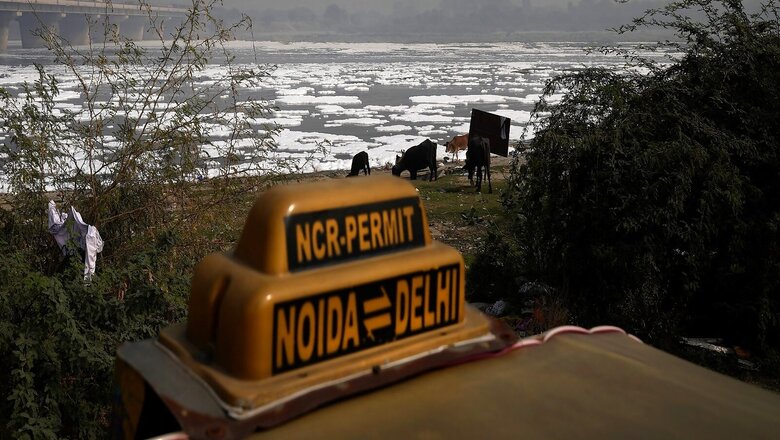
views
If all goes as planned, Delhi will have India’s biggest sewage treatment plant (STP) ready to pump out 564 million litres of treated water on a daily basis. With the work advancing at a fast pace, the new plant being constructed in Okhla along with two other STPs will help the national capital to prevent 1,362 MLD of dirty water from choking the Yamuna, which is currently among the most severely polluted rivers in the world.
“Yamuna is a high priority for us. It hasn’t got its due, but we are committed to reviving it,” G Asok Kumar, director general, National Mission for Clean Ganga, told News18. “We are pushing the work very hard and all three STPs at Rithala, Kundli, and Okhla should be ready by the end of the year. So we can begin the trial runs that might take another 2-3 months. By March 2023, we should have all three up and running.”
Rescue act
Being built at a cost of Rs 665 crore, the Okhla plant with a capacity of 564 MLD is not only India’s largest but is also believed to be one of the biggest sewage treatment plants in Asia. Of the other two, one at Kundli with an overall capacity of 204 MLD is being built at an overall cost of Rs 239 crore, while the other at Rithala has a capacity of 182 MLD and is being built at a cost of Rs 211 crore.
“Overall, Delhi will be able to treat as much as 1,362 MLD of dirty water falling into the Yamuna, which will be a big boon for the river,” said Kumar, exuding confidence. “If that treated water can be put back into the river, we can improve the quality of flow as well.”
The National Mission for Clean Ganga (NMCG) along with the Delhi Jal Board is now racing against time to ensure the major construction work is completed before the monsoon rains. “The work got delayed earlier because we were awaiting some tree-cutting permissions to come through. We have now readied an action plan, put additional manpower, and ordered the requisite machinery, so that we are on top of it by the time monsoon starts,” said Kumar, apprehending potential delay in October-November when a spike in air pollution forces the closure of all construction activities.
Meanwhile, the massive 318 MLD Coronation Pillar Sewage Treatment Plant constructed by L&T at a cost of Rs 515 crore has also been completed and is ready for trial runs. The plant is expected to treat at least 10 per cent of the wastewater generated in Delhi per day.
Rs 2,354 crore for 12 projects in Delhi
Overall, as many as 12 projects worth Rs 2,354 crore are currently under way for the treatment of 1,385 MLD sewage under the Namami Gange Programme in Delhi. Apart from the new plants, a lot of restoration work is underway to fix the existing ones and expand their efficiency. Several of these were either lying non-functional or were largely under-utilised.
Delhi, which is among the most polluted capital cities in the world, generates an estimated sewage flow of 3,273 MLD out of which 2,340 MLD is being treated against the installed capacity of 2,624 MLD, according to government data. At least 933 MLD of untreated sewage is currently being discharged into the Yamuna, which has turned toxic because of the high amount of pollutants in it.
According to experts, apart from execution delays, the problem of untapped drains (nallah) which are dumping sewage water directly into the river has been another huge challenge. At some points, it gets mixed with treated water coming out from the STPs. At least 19 such drains have been identified on the western side of the river, which also overflow during monsoons. The disposal of sludge has been a predicament as well, and the government is seeking industries’ support to help convert it into manure, which can then be made available to farmers in nearby villages.
“Now, the thrust area is to have smaller STPs ((50-100 kilolitre per day). In the longer run, it is the smaller STPs that will solve the bigger problem. If we can build smaller units in colonies, then there will be no need to transport sewage water for miles to get treated. We are running out of space, and instead of bigger projects that take a long time, we need to focus on smaller, localised solutions,” said Kumar.
Read all the Latest News India and Breaking News here




















Comments
0 comment